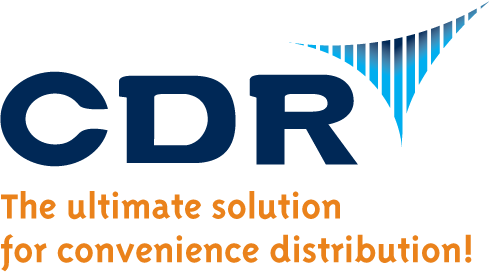Warehouse efficiency isn’t just about moving products faster—it’s about doing more with less. In the world of convenience distribution, where slim margins and tight delivery windows are the norm, reducing waste in operations can be the difference between staying competitive and falling behind. That’s where lean warehouse management comes in.
Lean principles, originally developed for manufacturing, are now being applied across the supply chain to help businesses identify inefficiencies, eliminate waste, and continuously improve their processes. For warehouse teams, this means better use of space, time, labor, and inventory. In this post, we’ll explore how lean management works in a warehouse setting, what types of waste to look out for, and how tools like DAC ERP can help streamline operations from receiving to delivery.
What Is Lean Warehouse Management?
Lean warehouse management is the application of lean principles—originally developed by Toyota for manufacturing—to warehouse operations. The core idea is simple: eliminate anything that doesn’t add value to the customer. In a warehouse, this could mean excess inventory, redundant handling steps, inefficient layout, or even underutilized employee skills.
At the heart of lean are five key principles that guide continuous improvement:
- Identify Value – Understand what your customers truly value and focus your efforts on delivering that.
- Map the Value Stream – Analyze every step in your warehouse processes to identify waste and opportunities for improvement.
- Create Flow – Ensure that products and tasks move smoothly through your facility without delays or bottlenecks.
- Establish Pull – Use customer demand to drive replenishment and fulfillment, avoiding overproduction and excess inventory.
- Seek Perfection – Continuously refine your operations to eliminate waste and improve performance.
Lean management also emphasizes the elimination of eight common types of waste, often remembered by the acronym TIMWOODS. In the next section, we’ll break those down and explain how they show up in typical warehouse environments.
The 8 Types of Waste in Warehouse Operations (TIMWOODS)
Lean management identifies eight specific types of waste that can slow down operations, drive up costs, and reduce overall efficiency. In a warehouse setting, recognizing and addressing these waste types is key to streamlining processes and improving service. The acronym TIMWOODS helps break them down:
- Transportation: Unnecessary movement of products between areas adds time and increases handling risks. For example, poor warehouse layout might require forklifts to travel longer distances than necessary.
- Inventory: Holding too much stock ties up capital and can lead to damage, obsolescence, or shrinkage. Excess inventory often signals inaccurate forecasting or inefficient replenishment processes.
- Motion: Unnecessary movement by workers—such as excessive walking or reaching—adds physical strain and wastes time. Inefficient picking routes or poorly organized storage contribute to this.
- Waiting: Time lost when workers, equipment, or shipments are idle. This could result from delayed deliveries, bottlenecks at packing stations, or slow decision-making due to lack of real-time data.
- Overproduction: Producing or ordering more than is needed leads to excess inventory and related costs. In warehousing, this might mean picking and staging orders before they’re actually required.
- Overprocessing: Performing more work than necessary, such as excessive packaging or redundant inspections. These steps add no value to the customer but consume time and resources.
- Defects: Mistakes like picking the wrong item, mislabeling, or damage during handling result in returns, rework, and dissatisfied customers.
- Skills (Underutilized Talent): Failing to use employees’ full capabilities—for example, not involving frontline workers in process improvement discussions—limits innovation and engagement.
By identifying these forms of waste, warehouse leaders can begin to take targeted action to eliminate them. In the next section, we’ll explore practical ways to apply lean principles in your day-to-day operations.
How to Apply Lean Principles in Your Warehouse

Putting lean principles into practice starts with a clear view of your current operations and a commitment to continuous improvement. You don’t need to overhaul everything at once—small, focused changes can make a big impact over time. Here are some practical strategies for applying lean in a warehouse environment:
- Use real-time data for better decision-making: Rely on accurate, up-to-the-minute data to track inventory levels, monitor picking accuracy, and identify workflow delays. This helps you make informed adjustments quickly.
- Implement standardized workflows: Consistent processes reduce confusion, training time, and variation. Document best practices for receiving, picking, packing, and shipping to ensure reliability and efficiency.
- Optimize warehouse layout and slotting: Arrange storage areas to minimize travel time and improve picking speed. High-turnover items should be easily accessible, while slower-moving products can be stored farther away.
- Improve picking methods: Choose the right picking strategy for your operation—whether it’s batch, zone, wave, or a combination. The right method reduces motion waste and increases accuracy.
- Reduce excess inventory through better forecasting: Analyze historical data, seasonality, and vendor lead times to order just what you need, when you need it—avoiding both shortages and overstock.
- Track performance with key metrics: Use KPIs such as order accuracy, pick rates, inventory turnover, and dock-to-stock time to monitor progress and highlight areas for improvement.
Each of these practices aligns with one or more lean principles, helping to create a smoother, more efficient warehouse operation. But to truly support these efforts, many companies turn to technology for added insight and control—especially ERP systems.
Role of ERP Systems in Lean Warehouse Management
While lean strategies can begin with process changes and better organization, technology plays a crucial role in sustaining and scaling those improvements. That’s where an ERP (Enterprise Resource Planning) system like DAC ERP from CDR Software comes in. A well-implemented ERP system acts as the central nervous system of your warehouse—connecting departments, automating tasks, and delivering real-time insights that drive lean decision-making.
Here’s how ERP systems support lean warehouse management:
- Real-time inventory visibility: With an ERP system, you can monitor inventory levels across your entire operation. This helps reduce overstocking, prevent stockouts, and support just-in-time inventory practices.
- Automated replenishment and order management: ERP software can automate reorder points based on actual usage and lead times, eliminating manual tracking and reducing the risk of overproduction or excessive inventory.
- Labor tracking and task management: Assign and monitor tasks by role or individual, identify bottlenecks, and analyze labor productivity—all of which support the elimination of motion, waiting, and underutilized talent waste.
- Streamlined receiving and put-away processes: Integrated workflows ensure that goods are received, verified, and stored efficiently. This reduces delays and errors that can ripple throughout the warehouse.
- Performance dashboards and reporting: ERP systems provide customizable KPIs and reports that allow managers to quickly assess efficiency, spot trends, and prioritize improvements based on actual data.
By integrating lean principles with ERP capabilities, warehouses can move beyond manual tracking and guesswork—building a foundation for smarter, more agile operations.
How DAC ERP Supports Lean Warehouse Management

For convenience distributors, lean warehouse management is about doing more with less—less inventory waste, fewer manual steps, and faster fulfillment. CDR Software’s DAC ERP is built specifically to support this goal, offering integrated tools that streamline operations and eliminate inefficiencies.
- Smarter Warehouse Control: DAC’s Warehouse Management System provides real-time visibility and control over inventory, receiving, and put-away. Features like dynamic slotting, cycle counting, and backstock management help optimize space and reduce motion waste.
- Mobile and RF Functionality: With DAC’s RF Warehouse System, teams can manage inventory and picking using wireless handhelds—minimizing errors and speeding up key tasks like UPC scanning, freshness tracking, and replenishment.
- Optimized Purchasing and Forecasting: The DAC Purchasing module automates replenishment based on demand, reducing overstock and stockouts. EDI integration streamlines communication with suppliers, keeping inventory lean and accurate.
- Integrated Order and Delivery Management: DAC ERP supports multiple order entry methods—inside sales, mobile, web, and EDI—and connects them with real-time inventory and customer data. On the delivery side, features like route optimization, electronic signatures, and A/R collection improve accountability and reduce delays.
- Streamlined Returns Handling: DAC’s Returns Manager automates the returns process, helping teams resolve credits quickly and accurately without added manual effort.
- Financial Oversight in One System: With integrated financial modules, DAC ERP brings A/R, A/P, and GL together—making it easier to track performance, cut wasteful spending, and make informed decisions.
By uniting warehouse, purchasing, delivery, and financial operations, DAC ERP gives your team the tools to implement lean practices that drive real results.
Conclusion
Adopting lean warehouse management isn’t about doing more work—it’s about doing the right work, at the right time, with fewer wasted resources. For convenience distributors, where speed and accuracy are essential, lean practices can transform your operations and make a noticeable impact on your bottom line.
With the right tools in place, lean isn’t just a goal—it becomes part of how your business operates every day. DAC ERP by CDR Software is built to support that transformation, helping you reduce waste, improve workflows, and make smarter decisions with confidence.
Ready to eliminate waste and improve efficiency? Contact CDR Software to learn how DAC ERP can support your lean journey.
FAQs
What is lean warehouse management?
Lean warehouse management applies lean principles to warehouse operations to reduce waste, streamline workflows, and improve overall efficiency.
What are the 8 types of waste in lean management?
They include: Transportation, Inventory, Motion, Waiting, Overproduction, Overprocessing, Defects, and underutilized Skills (TIMWOODS).
How can ERP systems support lean warehouse operations?
ERP systems help by providing real-time data, automating inventory management, streamlining order workflows, and enabling better decision-making.
Why is lean management important for convenience distributors?
Because of tight margins and fast-moving inventory, convenience distributors benefit from lean practices that reduce costs and improve service reliability.
Can lean principles be applied without major changes to the warehouse?
Yes—lean often starts with small process improvements, better organization, and using data to eliminate unnecessary steps or resources.

